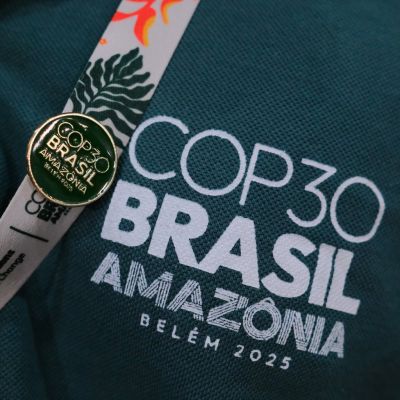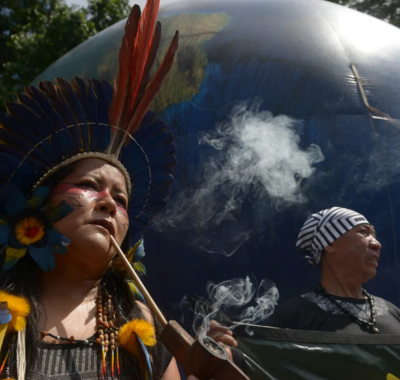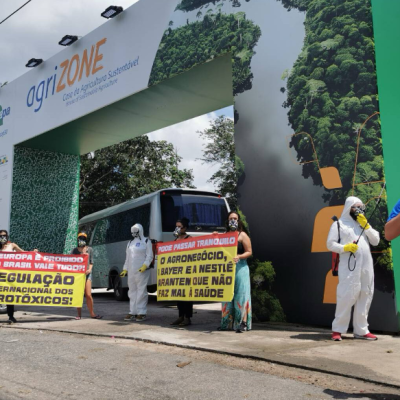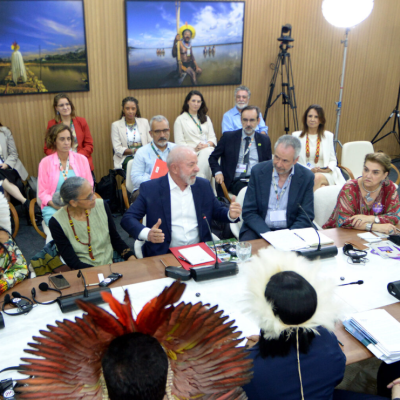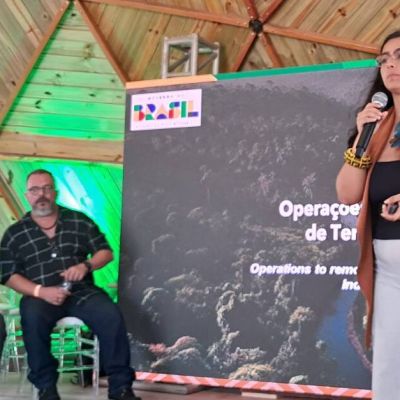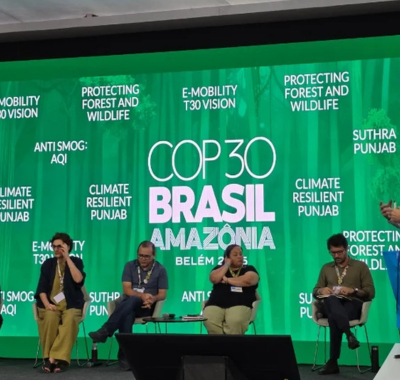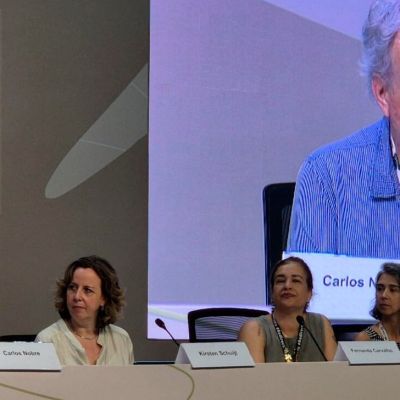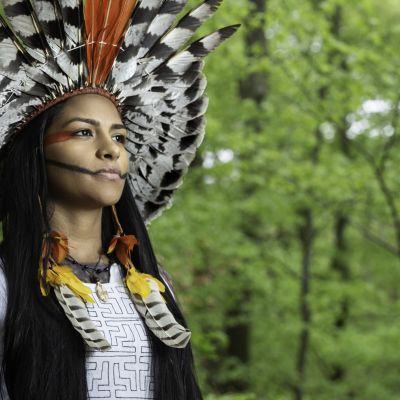In its second draft, the Gender Action Plan for 2026-2034 acknowledges inequalities and mentions some vulnerable groups but still treats race as a detail
Author: Flávia Santos
Translation: Roberto Cataldo/Verso Tradutores
At three in the morning, a new document was added to the website of the UN Framework Convention on Climate Change: the second draft of the 2026-2034 Gender Action Plan, which will guide how gender justice should appear in all climate decisions of the next decade. It comes out on the last day of COP30, after criticism – as well as popular and political pressure – to the first draft proposed on November 18, which considered that the term “women” encompassed all realities without specifying race, class and territory.
At first glance, the second draft, which precedes the final version, seems to respond to the criticisms. The text includes a paragraph on the differentiated impacts on the lives of some women – indigenous, rural, migrant, and women with disabilities – and consolidates the term “African descent” in its preamble, without the brackets used in the previous version.
In practice, however, the need for political pressure in order to acknowledge the basics shows how countries are not prepared to move beyond discourse and turn it into real goals.
What the document brings in concrete terms
Among the 14 paragraphs, the Action Plan – which is already moving towards its final version – states that the impacts of the climate crisis and the opportunities “are not equal for all women.” The plan specifically mentions Indigenous women, and women from local communities, migrant women, women with disabilities, women smallholder farmers farmers, and women from rural and remote communities.
Still, the document does not tie this acknowledgement to any concrete obligation. It does not set minimum participation targets and does not provide specific resources for the women mentioned, nor does it say that climate finance needs to help correct the racial and territorial inequalities mentioned in the plan.
“We need to bring all the consensus already achieved by humankind into the climate system: the Universal Declaration of Human Rights, racial and gender equality agreements, they all have to fit in here,” argued Jurema Werneck, a Black feminist doctor and executive director of Amnesty International Brazil, during COP30.
Werneck stressed that, as a Black woman, she is deeply upset by any setbacks. “If the climate system goes backward in relation to what humanity has already built in terms of human rights, equality, and dignity, something is very wrong.”
The document also includes many references and notes from other materials that underscore gender disparity, assessing Constituent Bodies of the Climate Convention (UNFCCC) that have – or have not – incorporated the gender perspective in their works or studies confirming that women are still a minority in delegations. In addition, it expresses gratitude to the institutions that organized technical workshops and sets a timetable for the plan to be reviewed and implemented.
Finally, the text acknowledges that the plan can be a tool to guide climate action but stresses that the paths will be “nationally determined.” In other words, each government decides how seriously it will actually take these guidelines. Even in its second version, the draft sounds disappointing.
Too much process, too little obligation
The gender plan was developed amidst open resistance from countries that are trying to erase even the word “gender” from decisions, as happened at COP29. The document becomes fragile because it is not a robust instrument that links climate justice to redistribution of power, income, and reparations. The feeling is that it is full of processes, workshops, reports, and invitations but shows little willingness to change the structures that keep the very same people vulnerable.
A report by Habitat for Humanity Brazil, presented at COP30, shows that 66.6% of people living in at-risk areas in the country are Black – and the families most affected by climate disasters are precisely those headed by Black women.
In a country like Brazil, which is hosting COP30 and has 56.1% of its population identifying as Black or mixed-race according to IBGE’s 2022 surveys, this absence of an explicit racial focus and direct mention of Black women is even more significant. The text speaks of “raising climate ambition” and “creating decent jobs” in a just transition but says nothing about those who have been left out of these jobs or the historical weight of racism in the distribution of climate damage and the benefits of any green transition.
Estela Bezerra, Brazil’s Ministry of Women’s National Secretary for Combating Violence Against Women, also states that treating race as a detail in international climate texts ignores how inequality is organized in Brazil. “If the climate impact first affects impoverished, riverside, and favela populations, who lack the infrastructure and technology to mitigate the damage, we are talking primarily about Black people and women.”
The comparison between the first and second drafts clearly shows this ambivalence. One of the strongest passages in the initial versions invited the CMA – Conference of the Parties serving as the Meeting of the Parties to the Paris Agreement, the body that gathers the countries of the Paris Agreement – to consider and adopt the gender-enhanced Lima work program and the action plan. If this invitation had survived, the gender plan would have gained more weight – it would have become a formal reference for the implementation of the Paris Agreement as well, rather than just the Climate Convention in general. In the second draft, this paragraph simply disappeared.
People’s pressure
When the first draft was published, Geledés – Black Women Institute, an observer organization in UN climate negotiations, denounced that the EU, the UK, and Australia blocked precisely the section that would guarantee recognition for the Afro-descendant population in the COP30 Gender Action Plan.
“The unavoidable question remains: why do the European Union, the United Kingdom, and Australia – which are so vocal about human rights and climate justice – refuse to recognize those who suffer most from environmental racism, gender inequality, and the direct impacts of the climate crisis?”, the institution asked.
According to Geledés’s Climate and Youth Advisor Ester Sena, the argument of these countries is that it would be enough to recognize “all women” as the people most affected by climate impacts. “The problem is that this creates the false impression that all women are affected in the same way – and this simply does not correspond to reality,” she says.
At the time, Brazil’s Minister of the Environment Marina Silva said in an interview with AzMina that Brazil and Colombia were working together to try to ensure that race was included in the final text. According to her, there were impasses regarding the terminology to be adopted, such as “Afro-descendant” – used to refer to descendants of Africans who were enslaved and taken to other continents. Representatives from African countries point out that this word does not accurately describe the reality of those who live in the continent and identify as African.
What is the gender action plan?
Since 2014, with the Lima Work Program on Gender, the Climate Convention has acknowledged that it needs to integrate the gender perspective into all climate policy.
Since then, this agenda has been gradually built: in 2017 came the first Gender Action Plan, created to take this promise from discourse to concrete actions. In 2019, the Lima Program received an “enhanced” version, and in 2023, at COP29, countries decided to extend the program for another ten years and commission a new action plan, which would be adopted now, in Belém, at COP30. Therefore, there was a lot of expectation, especially in Brazil, about how the gender issue would be addressed at the conference.
The fight for every bracket
While we crawl to get the gender agenda off the ground, the rights already guaranteed – such as the gender action plan – are under constant threat. At COP29, a conservative alliance involving countries such as Saudi Arabia, Iran, Russia, Egypt and the Vatican tried to empty the language of gender and, in particular, references to women diversity and intersectionality. Among the passages attacked and cut were mentions of gender equality, women diversity, and intersectionality.
Under pressure from Latin American and European countries, some of this language remained, but the message was clear: the gender agenda is still under attack in climate negotiations. The situation is even more difficult when race is included in the discussion.
When negotiations stall – and they always do – the COP30 presidency resorts to a political mechanism known as ministerial pairs: two ministers from different countries are chosen to “sponsor” topics and try to broker agreements in the final stretch. In a letter sent to the delegations, COP30 president André Corrêa do Lago designated Chile and Sweden as ministerial partners for gender, tasked with helping to finalize the text of the new gender action plan.
For Ester Sena, what is seen in Belém repeats a historical pattern of erasure. “The rights of indigenous and Afro-descendant populations are never naturally guaranteed in any space. Only with pressure, coordinated action, and strategy can we guarantee recognition for our bodies and territories,” she says.
“The struggle continues. The climate system doesn’t end at COP30, so our struggle doesn’t end at COP30 either.” Jurema Werneck
When this report was published, the final version of the Gender Action Plan was still under negotiation. While it is not finalized, AzMina continues to keep an eye on what goes in, what goes out, and what remains in brackets.
—
This report was produced by AzMina, through the Collaborative Socio-environmental Coverage of COP 30. Read the original report at: https://azmina.com.br/reportagens/quando-raca-e-detalhe-o-plano-da-cop30-que-apaga-mulheres-negras/?swcfpc=1



